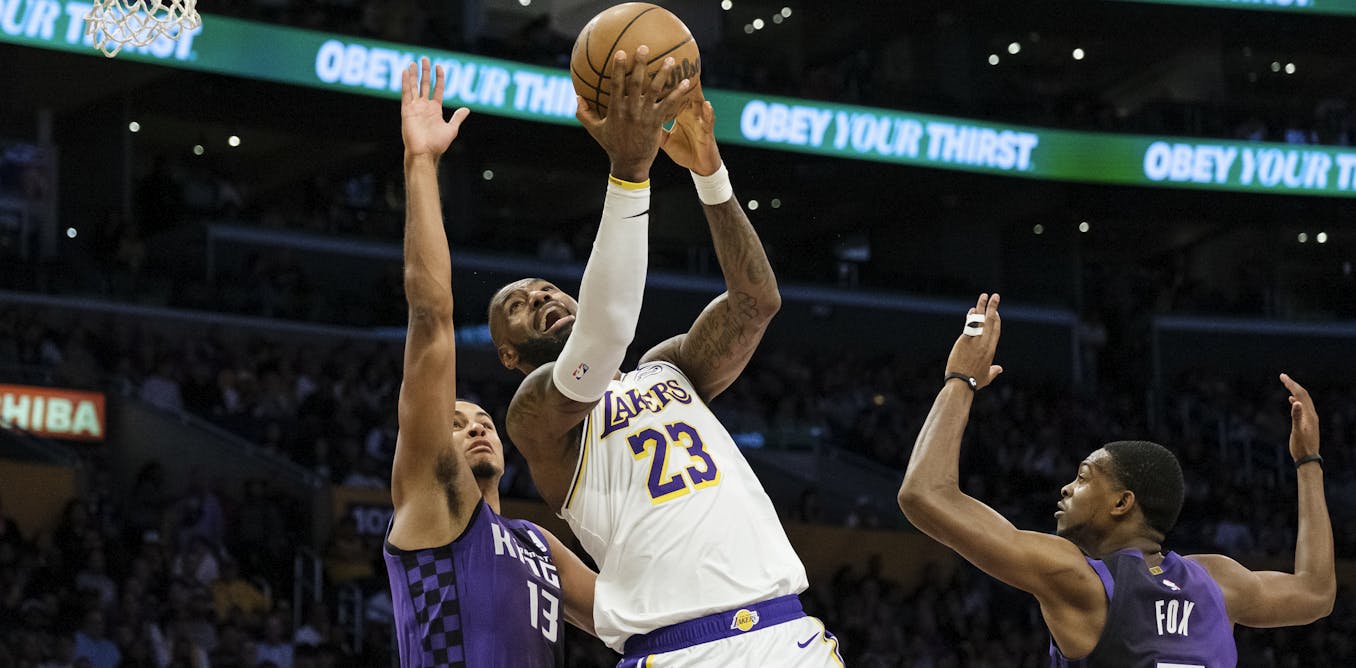
NFTs in sports: What to know about the dangers of fraud and counterfeiting
How did your country report this? Share your view in the comments.
Diverging Reports Breakdown
Original Coverage: NFTs in sports: What to know about the dangers of fraud and counterfeiting
Non-fungible tokens (NFTs) are experiencing spectacular growth thanks to the new opportunities they offer to fans, clubs and athletes. Platforms such as NBA Top Shot, which allows users to own key moments in basketball as NFTs, generated nearly $500 million in sales in 2021. For this sector to reach full maturity, there must be stricter regulation and enhanced security practices, say the authors. Despite significant volumes, there is a notable concentration of value in a small number of accounts: nine per cent of accounts hold 80% of the market value of the $41 billion worth of N FTs traded on the Ethereum blockchain. Despite their apparent accessibility, NFTS can exacerbate market dynamics that already exist in the world of art and physical collections, the authors say. The most worrying example is the “rug pull,” where creators abruptly abandon a project after inflating its value, causing the value of NFT tokens to plummet. The authors: To date, few specific regulations to operate in a regulatory grey area have been put in place, although some countries, such as France, have put specific regulations in place to put a stop to NFT fraud and wash trading, which involves making artificial transactions to manipulate
Top 7 NFT use cases for business
Non-fungible tokens (NFTs) are digital tokens of virtual and real-world assets. NFTs offer a means of digitizing assets, monetizing intellectual property and verifying the authenticity of physical assets on the internet. The list of potential applications is long and covers a broad assortment of industries, from fashion and sports to finance and real estate. As the NFT market develops, buyers and sellers should proceed cautiously, experts say.. The early use cases include Cryptopunks, which are algorithmically generated pixel images, and “Everydays: The First 5000 Days,” a collage of images by artist Mike Winkelmann (better known as “Beeple”), which is sold for $5,000 to $10,000 in the U.S. The NFT industry is studying ways to make the technology more environmentally sustainable, an analyst at Gartner says. The late 2022 collapse of the FTX cryptocurrency exchange clobbered demand for N FTs, even though the two markets are unrelated, said Avivah Litan, a vice president at G Bartner, adding that turmoil in the global economy and banking community hasn’t helped. “We’re definitely in a crypto winter, but there are
From ‘rug pulls’ to counterfeits, here are the biggest scams in the NFT space
Non-fungible tokens (NFTs) are a digital asset secured through the blockchain. The price of an NFT is largely driven by investor sentiment, but some have commanded huge prices. Experts say many of the outright frauds in the NFT sector fall into one of the following categories. ‘Rug pulls’ are a form of scam where a fraudulent NFT project is promoted, usually via paid advertising and social media. In total, Rug pulls accounted for almost 40 per cent of revenue produced by crypto scams in 2021, experts say. The anonymous nature of many NFT projects leaves victims with little recourse, they say. In February, hackers launched a phishing attack on users of OpenSea, the world’s largest NFT marketplace. The hackers targeted high-value tokens, including NFTs from the viral collection Bored Ape Yacht Club, estimates put the total value at around $1.7 million US. Such big scores are likely to continue as scam artists exploit the lack of regulation and mania behind the digital art movement to rip off unsuspecting buyers. Much like the fine market, buyers have to sniff out counterfeits and plagiarized works from the genuine masterpieces, but can be hard to produce
Pros and Cons of Investing in NFTs
Non-fungible tokens (NFTs) are similar to cryptocurrencies but with key differences. NFT investing is helpful for establishing a clear chain of ownership over an asset. But it still includes the possibility of counterfeiting, fraud, and money laundering. The asset tokenized by the NFT may be nonexistent, duplicated, or tainted. The remote nature of NFT transactions makes it difficult to vet and maintain compliance with anti-money laundering (AMAM) laws. Anyone can make claims about an NFT transaction, and set up an N FT marketplace online, allowing criminals to prey on unsuspecting buyers. The NFT can digitally signify from an app or website any item that benefits from having its ownership documented. It’s a convenient digital means of establishing and verifying ownership of any type of asset Mitigates conflict in ownership claims Own portions of an asset that may not otherwise be fractionalized. Tradeoffs of self-managing security Doesn’t prevent disputes, theft, and infringement. Added investment analysis of underlying asset NFT Pros Explained Investors have many reasons to want to buy and sell assets that are tokenized into NFTs. It can also come with disadvantages, including: Lack of market regulation, with little to
Global Perspectives Summary
Global media portray this story through varied cultural, economic, and political filters. While some focus on geopolitical ramifications, others highlight local impacts and human stories. This diversity of coverage reflects how national perspectives influence public understanding.
Source: https://theconversation.com/nfts-in-sports-what-to-know-about-the-dangers-of-fraud-and-counterfeiting-255753

